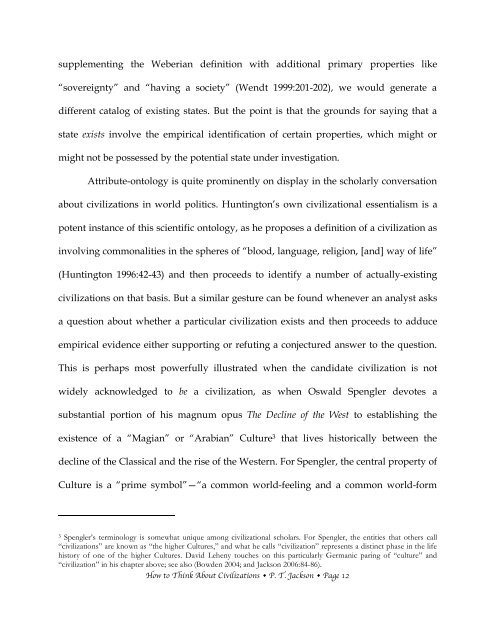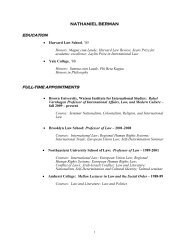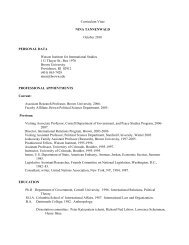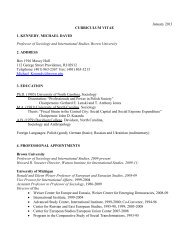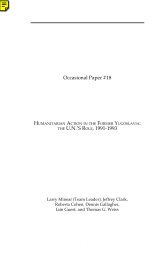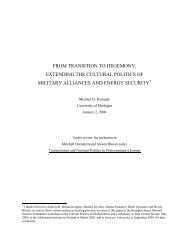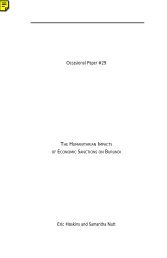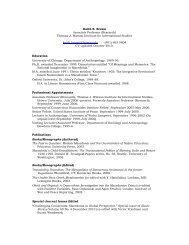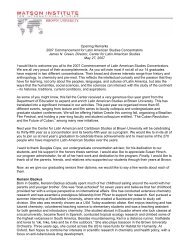How to Think About Civilizations - The Watson Institute for ...
How to Think About Civilizations - The Watson Institute for ...
How to Think About Civilizations - The Watson Institute for ...
Create successful ePaper yourself
Turn your PDF publications into a flip-book with our unique Google optimized e-Paper software.
supplementing the Weberian definition with additional primary properties like<br />
“sovereignty” and “having a society” (Wendt 1999:201-202), we would generate a<br />
different catalog of existing states. But the point is that the grounds <strong>for</strong> saying that a<br />
state exists involve the empirical identification of certain properties, which might or<br />
might not be possessed by the potential state under investigation.<br />
Attribute-on<strong>to</strong>logy is quite prominently on display in the scholarly conversation<br />
about civilizations in world politics. Hunting<strong>to</strong>n’s own civilizational essentialism is a<br />
potent instance of this scientific on<strong>to</strong>logy, as he proposes a definition of a civilization as<br />
involving commonalities in the spheres of “blood, language, religion, [and] way of life”<br />
(Hunting<strong>to</strong>n 1996:42-43) and then proceeds <strong>to</strong> identify a number of actually-existing<br />
civilizations on that basis. But a similar gesture can be found whenever an analyst asks<br />
a question about whether a particular civilization exists and then proceeds <strong>to</strong> adduce<br />
empirical evidence either supporting or refuting a conjectured answer <strong>to</strong> the question.<br />
This is perhaps most powerfully illustrated when the candidate civilization is not<br />
widely acknowledged <strong>to</strong> be a civilization, as when Oswald Spengler devotes a<br />
substantial portion of his magnum opus <strong>The</strong> Decline of the West <strong>to</strong> establishing the<br />
existence of a “Magian” or “Arabian” Culture 3 that lives his<strong>to</strong>rically between the<br />
decline of the Classical and the rise of the Western. For Spengler, the central property of<br />
Culture is a “prime symbol”—“a common world-feeling and a common world-<strong>for</strong>m<br />
3 Spengler’s terminology is somewhat unique among civilizational scholars. For Spengler, the entities that others call<br />
“civilizations” are known as “the higher Cultures,” and what he calls “civilization” represents a distinct phase in the life<br />
his<strong>to</strong>ry of one of the higher Cultures. David Leheny <strong>to</strong>uches on this particularly Germanic paring of “culture” and<br />
“civilization” in his chapter above; see also (Bowden 2004; and Jackson 2006:84-86).<br />
<strong>How</strong> <strong>to</strong> <strong>Think</strong> <strong>About</strong> <strong>Civilizations</strong> • P. T. Jackson • Page 12


